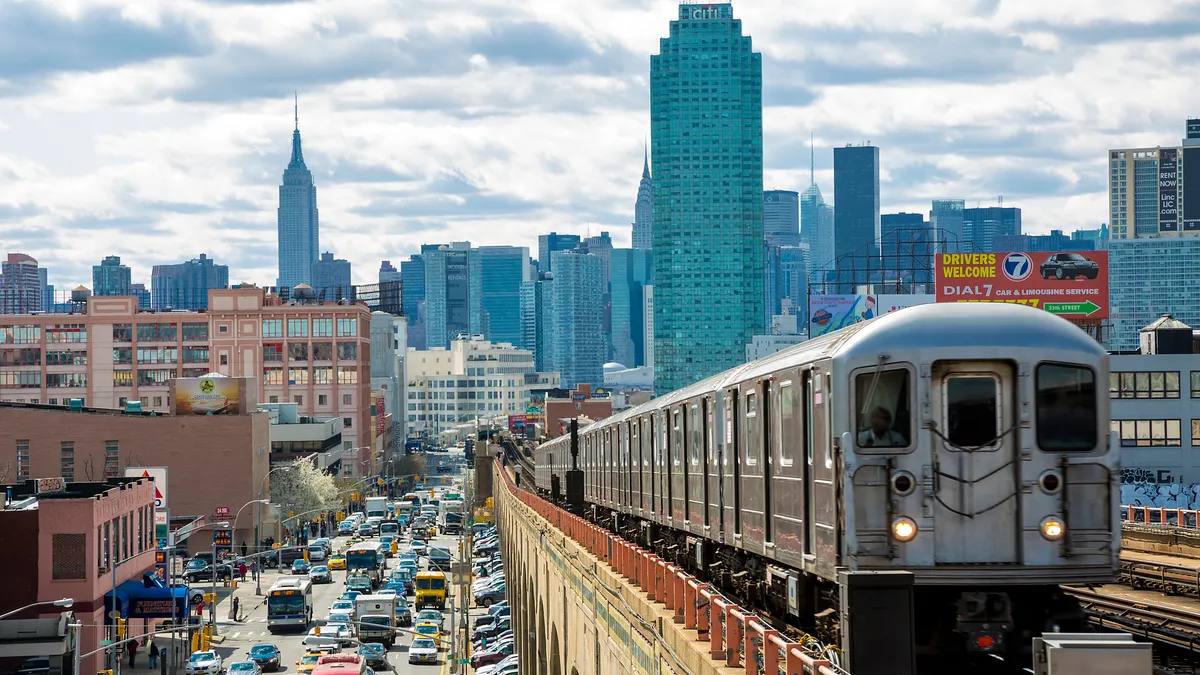The following is a contributed article from Paul Skoutelas, president and CEO of the American Public Transportation Association, and Jim Tymon, executive director of the American Association of State Highway and Transportation Officials.
Most things are better together. The concept of a whole that is stronger than its individual parts rings true in today's multi-transit world.
Roads, waterways, airports and passenger and freight railroads move goods and people more efficiently when they work together, offering more options for trips that can vary widely in terms of time and distance.
Public transportation is a key facet in this transportation matrix, as it offers multiple local and regional travel options to work, schools and health care.
But without a robust, certain and long-term federal commitment to transportation infrastructure, the U.S. will lose its ability to be a competitive global leader in this multi-transit reality.
There is a $90 billion backlog for transit capital projects according to the U.S. Department of Transportation’s (USDOT) 2015 Conditions and Performance Report. Meanwhile, federal investment in transportation and water infrastructure has declined substantially from almost 6% of total federal spending in the 1960s to only 2.5% as of 2017.
Public transportation is increasingly being viewed as a "regional mobility manager" by many consumers. A recent survey by the American Public Transportation Association (APTA) found that 77% of commuters view public transit as the backbone of a lifestyle that connects them to ride-hailing and car-sharing services, scooters and bicycles. Ridership on public transportation has grown by 27% since 1995, surpassing the 23% growth in the U.S. population.
The partnership among all levels of governments — local, state and federal — has been vital to ensuring that transportation continues to be the economic engine for our country and contributes to a better quality of life for all.
Today, state departments of transportation (DOTs) across the country are deeply involved in the financing and administration of public transit programs, part of the increasingly multi-transit role they play as stewards of the nation’s transportation systems.
Indeed, according to the recently published 2019 Survey of State Funding of Public Transportation compiled by the American Association of State Highway and Transportation Officials (AASHTO), state DOTs invested $19.04 billion in public transit in FY 2017, while federal funds totaled $11.88 billion.
In addition, 25 states and the District of Columbia increased their public transit funding in FY 2017 by a total of $1.1 billion over FY 2016 levels — a key indicator of how state DOTs are bolstering support for public transit operations and capital projects and enhancing public transportation options in both urban and rural communities.
Compounding matters, the Highway Trust Fund is expected to experience a significant cash shortfall due to declining motor fuel tax revenues — a tax that hasn't been increased at the federal level since 1993. If nothing is done, by 2020 there will be an estimated 51% drop in highway obligations, from $46.9 billion to $23 billion, and the Mass Transit Account will become insolvent in 2021.
This reduction in federal reimbursements could lead to serious cash flow problems for the states and for transit systems and would result in the delay and even the discontinuation of much needed projects.
These are disturbing facts which could threaten the essential mobility options our nation’s citizens want and need in small and large cities across America. Congress and the Trump administration need to act now to fix the Highway Trust Fund.
Working together we must make our voices heard so that we ensure a bright and prosperous future for our generation and the generations to come.











